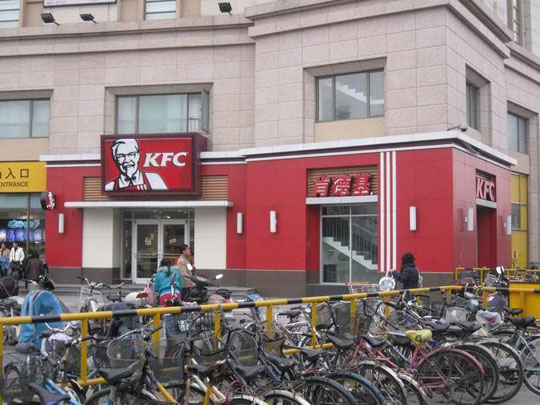For nearly 150 years, American businesspeople have been entranced by the possibilities of China—an unimaginably huge, virgin market. If only the Middle Kingdom were to develop into a thriving consumer society, it would be an incredible playground for American brands and companies—bigger and more profitable, potentially, than the U.S. domestic market. (See Thomas McCormick’s The China Market for an excellent history of this idea.) It hasn't quite worked out. Revolutions, communism, state control of the economy, enduring poverty and the tendency of the Chinese to save rather than spend have all proven to be formidable obstacles.
The Chinese operations of many American companies are still dwarfed by their massive domestic operations. Wal-Mart, for example, had 246 stores in China as of March 31, serving just 7 million Chinese customers weekly—a tiny portion of the population. But now, thanks to macroeconomic upheaval in the U.S. and China, the promise of the China market finally seems to be within reach. Exports to China are up about 25 percent in the first quarter of 2009 from 2008, but they're still tiny, just $5.5 billion in March. More significant has been the rapid growth of U.S.-branded products that are made and marketed in China.
Exhibit A: The Wall Street Journal reported today that Citigroup made far more money in China last year than it did in the U.S. That's not saying much, since Citi notched a $27.68 billion loss in 2008, mostly from its U.S. operations. But as James Areddy reports, the bank's "net income in China jumped 95 percent in 2008 to the equivalent of $191 million, helped by a 20 percent rise in commercial foreign-exchange transactions."
Exhibit B. General Motors. In April, GM sold 173,007 vehicles in the U.S., down 34 percent from April 2008. The same month, GM's China sales jumped 25 percent to a record 151,084. It's always dangerous simply to forecast by extrapolation, but the trends are undeniable. If GM's monthly China sales increase 7 percent from current levels and the carmaker's U.S. monthly sales decrease by 7 percent from current levels, then GM—more accurately, GM and its joint-venture partners—will be selling more cars in China than in GM's home country.

Exhibit C: YUM Brands, the parent of Pizza Hut, KFC, Taco Bell and Long John Silver's. Last year, YUM's restaurant count in the U.S. was basically unchanged. But its China unit, which comprises mainland China, Thailand and KFC Taiwan, opened 500 new restaurants and tallied operating profits of $469 million. With 2,980 restaurants and a new outlet opening almost every day, Yum Brands says KFC is the "largest and fastest growing restaurant chain in mainland China today." In the U.S., by contrast, the number of KFCs has fallen each of the last four years, from 5,525 in 2004 to 5,253 in 2008. Sales data show that KFC's U.S. operations still outsell its Chinese operations, by a margin of $5.2 billion to $3.6 billion. But when you back out sales of franchisees, the stores owned by YUM brands in China sold $2.5 billion worth of greasy chicken goodness in 2008, compared with $1.2 billion for company-owned stores in the U.S.
For the near term, it looks as if these trends will continue, and not just because the U.S. market for banking, cars and fast food is mature and shrinking while the Chinese markets for those goods and services is immature and growing. We may also be witnessing some fundamental shifts in trans-Pacific consumer behavior. As Geoff Dyer writes in an excellent Financial Times article, China's savings rate was a stunning 50 percent of GDP in 2007. But the Chinese consumer is more cautious than cheap. "Many Chinese put a large chunk of their wages into bank accounts because they are worried about pensions, education expenses and—most of all—the prospect of a big hospital bill if a family member falls seriously ill," Dyer writes. Ironically, the same may be said of post-credit-boom Americans, who are socking away cash instead of buying stuff made in China. Thanks to the global slump, The New York Times noted, Chinese exports overall were off 22.6 percent in April. And in the first quarter of 2009, according to the Commerce Department, Chinese exports to the U.S. fell 10.8 percent from the 2008 first quarter.
To make up for lost exports and to keep all those factories humming, China's government is now focusing on ways to bolster domestic consumer spending. A key form of stimulus, Dyer writes, will be boosting the government's role in providing health care. China has an ambitious effort underway to build clinics and has pledged to cover 90 percent of the population with some form of health insurance by 2011. More than tax cuts or public works spending, the thinking goes, a stronger safety net could spur Chinese consumers to spend less and save more.
In other words, the fact that China's population may soon be insulated from some of the ill health effects of eating KFC and driving Buicks might free up more cash for middle-class workers in Shenzhen to eat more KFC and buy more Buicks.